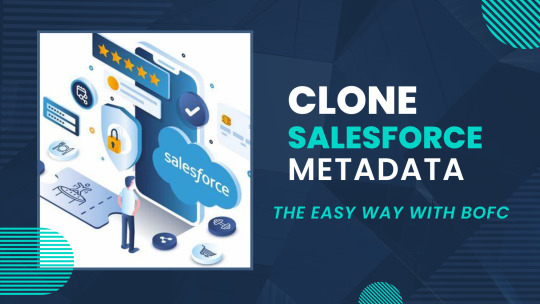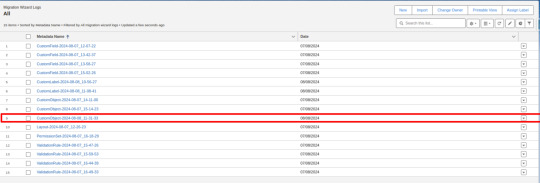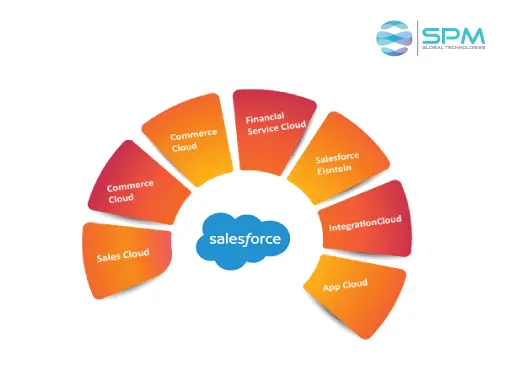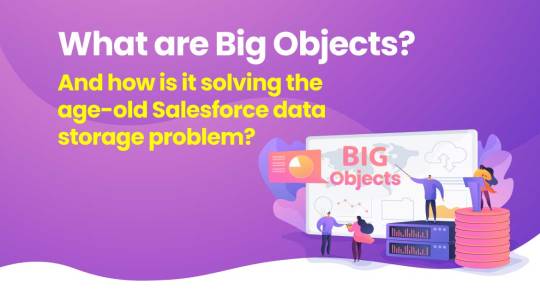#Salesforce Objects
Explore tagged Tumblr posts
Text
Export Multiple Objects in Salesforce
Tired of the tedious task of exporting Salesforce objects one by one? With BOFC, effortlessly export multiple objects (standard or custom) into a comprehensive XLS sheet, saving you valuable time and effort. Gain deeper insights into your data with detailed object information, including field names, data types, and permissions. Learn more with this step by step blog post.
0 notes
Text
Clone Salesforce Objects, Fields & Validation Rules in Bulk – The Easy Way with BOFC

Salesforce admins and developers know the pain of repetitive configuration tasks. Whether you're setting up a sandbox, migrating to a new org, or simply duplicating a structure for a new business unit — cloning objects, fields, and validation rules manually is a time-consuming process.
Enter BOFC (Bulk Object Field Creator) — a powerful productivity tool designed to eliminate the tediousness of bulk Salesforce configuration.
🔄 The Challenge: Manual Cloning in Salesforce
Out-of-the-box, Salesforce does not provide a native way to bulk clone metadata elements like:
Custom objects and their fields
Validation rules
Record types
Field-level security
Page layouts
This typically involves a mix of manual clicks, change sets, or complex metadata API scripts — not ideal when time is tight.
✅ The BOFC Solution: Clone Everything in Just a Few Clicks
BOFC simplifies the entire process by allowing users to clone multiple elements at once, right from within Salesforce. Here’s what you can do with BOFC:
🔹 Clone Custom & Standard Objects:
Duplicate object definitions along with fields, record types, and relationships — perfect for sandbox creation or org replication. Read More
🔹 Clone Fields in Bulk:
Select and copy fields from one object to another with full control over field types, help texts, picklist values, and more. Read More
🔹 Clone Validation Rules:
Copy complex business logic rules from one object to another — maintaining your governance without extra effort.
🔹 Field-Level Security & Profiles:
Ensure cloned components maintain appropriate access by replicating security settings across profiles.
🧠 Why Use BOFC?
Save hours of manual work
Avoid errors and inconsistencies
No coding or deployment tools required
Works within Salesforce using an intuitive interface
🔍 Real Use Case:
A Salesforce admin needs to set up a new custom object with 50+ fields, similar to an existing object. Normally, this would take hours. With BOFC, it’s done in under 5 minutes — including cloning of fields, validation rules, and picklist values.
🛠️ Getting Started with BOFC
Install the BOFC package from AppExchange
Navigate to the BOFC app within Salesforce
Choose what you want to clone (objects, fields, rules, etc.)
Select source and destination
Click Clone — and you're done!
📈 Boost Your Salesforce Productivity
Whether you're a Salesforce Admin, Architect, or Consultant, BOFC is the go-to tool for speeding up your org setup and maintenance tasks.
👉 Try BOFC Today and take control of your Salesforce configuration with confidence.
#salesforce#appexchange#salesforce metadata#clone salesforce metadata#bulk clone objects#clone multiple objects
0 notes
Text
Looking to Mass Clone Salesforce Objects with migSO?
Mass cloning Salesforce objects can be a game-changer for organizations or individuals looking to streamline their operations and save valuable time. However, by default, Salesforce does not allow you to mass clone objects, and manually cloning objects from one org to another is tedious and time-consuming which leads to higher costs. That’s where migSO steps in to revolutionize the process.

migSO is a native Salesforce app crafted by our experts, designed to seamlessly clone, export, and manage distinct Salesforce metadata items—all within a single platform. Strictly built as per Salesforce AppExchange guidelines, migSO ensures reliability, efficiency, and maximum value from your Salesforce metadata.
But before diving into how migSO simplifies mass cloning, let’s first explore why businesses need to mass clone Salesforce objects in the first place.
The Need to Mass Clone Salesforce Objects
Here are some reasons why the admin needs to mass clone Salesforce objects from their orgs-
Save time & effort: It can save significant time and effort, especially when you need to clone the same objects in different Salesforce Org.
Consistency across orgs: It facilitates consistency across different Salesforce orgs, ensuring that objects carry the same fields and configuration while reducing discrepancies.
Quick adaption to business changes: It allows admins to rapidly create and deploy new objects to quickly adapt to business strategy shifts.
Backup & recovery: In case of accidental deletion or misconfiguration of an object in an org, you can clone the lost object from source org quickly while eliminating extensive rework.
Mass Clone Salesforce Objects in a Few Clicks With migSO
Given below are the steps to mass clone Salesforce objects using migSO-
Step 1. Open migSO via App Launcher
Click “App Launcher” and search & select migSO.
Step 2. Select Clone Wizard
Step 3. Select Metadata Item
Step 4. Select Source Org
Step 5. Choose Objects & Deploy
Step 6. Select Relevant Metadata Items to Clone
Step 7. Review Deployment Status
Step 8. Set Fields Permission
Step 8. Download Report

Conclusion
The process to manually cloning Salesforce objects is a hectic task; however, migSO simplifies this process by empowering admins to mass clone Salesforce objects from one org to another seamlessly. Whether you aim to mass clone metadata items or quickly export them in bulk, migSO is your ultimate solution for all metadata operation needs—empowering you to work smarter, faster, and with remarkable efficiency.
Who are We?
Tech9logy Creators is a Registered Salesforce Consulting and ISV Partner Company with over 11+ years of experience. We have a certified team of developers with extensive knowledge about Salesforce AppExchange and provide you with the best-in-class personalized apps. Our dedicated Salesforce experts help you bring the best out of your CRM and ensure your business operates at its highest potential.
Contact us for more information.
#Salesforce Clone Objects#Clone Objects in Salesforce#Clone Bulk Objects in Salesforce#Clone Mass Objects in Salesforce
0 notes
Text
Salesforce | SPM Global Technologies

#“Salesforce”#“Salesforce Trainings”#“Salesforce Service Provider”#Salesforce is one of the most customizable and robust solutions available to companies to help achieve their business objectives. Finding o
0 notes
Text
Interview Questions: External Objects
Interviewer: What is the use of External Objects Interviewee: When we need to show the data from the external sources without pulling the data actually into the salesforce org and just replication of the data on demand that’s when we can use the External objects. Interviewer: What is the pros and cons of Using External Objects Interviewee: Pros: 1. We can replicate the data securely from the…
View On WordPress
#Cross-Org#External Data sources#External Objects#OData#saleseforce#Salesforce#Salesforce Connect#Salesforce Connect Odata#Salesforce External Objects#trailhead
0 notes
Text
There are some lesser-known apps and features that can help streamline your work and maximize your salesforce efficiency even further. Here are five of them -
#salesforce developer#salesforce developer skills#salesforce admin skills#Salesforce Technical Skills#salesforce skills object#salesforce Certificationa#habilelabs#erp solutions#ethicsfirst
0 notes
Text
Understanding “what is tab in Salesforce” and How Tabs Empower You

/ Salesforce, Salesforce Administration / By softatdm1
Feeling lost in your Salesforce jungle? Learn “what is tab in Salesforce” as tabs act as your map, guiding you to key data & functions. Explore their types, uses, & customization – master navigation & boost efficiency!
Are you drowning in a sea of Salesforce data?
Take a deep breath, fellow sales warrior! Your ship has come in, bearing the flag of clarity and efficiency: Salesforce tabs! These mighty navigational beacons will guide you through the choppy waters of your CRM, revealing hidden treasures of customer insights and streamlined workflows.
Imagine this: No more frantic searching for crucial leads. No more aimlessly clicking through endless menus. Tabs act as your trusty map, neatly organizing your Salesforce world into accessible, labeled islands of data and functionality. Standard tabs like Accounts and Contacts become your ports of call, while custom tabs let you chart your own course, tailoring the interface to your specific needs.
So, ditch the anchor of frustration and set sail with the power of tabs! This guide will be your compass, leading you through the uncharted territory of Salesforce navigation. We’ll demystify the different types of tabs, unlock their hidden potential, and empower you to customize your interface for peak productivity. Get ready to conquer your Salesforce journey, one click at a time!
Demystifying “what is tab in Salesforce”: Your Keys to the Salesforce Kingdom.
Have you ever gazed upon the sprawling interface of Salesforce, feeling a pang of overwhelm as countless menus and buttons stared back? Fear not, intrepid explorer, for within this digital landscape lies a secret weapon: tabs! These unassuming heroes act as your map and compass, guiding you through the treasure trove of data and functionalities that lie within. But before you can embark on your Salesforce odyssey, let’s crack the code of these navigational marvels.
What are these enigmatic “tabs,” you ask? Imagine them as the labeled sections lining the walls of a grand library. Each tab, bearing a clear title, houses a specific category of information or tools. Just like flipping through the pages of a captivating novel, clicking a tab transports you to a dedicated realm within Salesforce. Think of the “Accounts” tab as your bustling marketplace, where you meet and manage your key players. The “Opportunities” tab becomes your strategic war room, where you plot your path to success. Each tab holds a specific key to unlocking the potential hidden within Salesforce.
Standard Tabs: Familiar Faces, Trusted Guides:
As you first enter your Salesforce haven, you’ll encounter a set of pre-built tabs, acting as familiar faces along your journey. The “Sales” tab, your trusty companion, houses everything you need to manage your leads, opportunities, and quotes. The “Service” tab transforms you into a customer hero, ready to tackle cases and track resolutions. These standard tabs form the core of your Salesforce experience, providing a solid foundation for navigating the platform.
Custom Tabs: Charting Your Own Course:
But what if your adventures require venturing beyond the well-trodden paths? Enter the realm of custom tabs! These blank slates empower you to forge your own path, tailoring the Salesforce interface to your unique needs. Imagine creating a tab dedicated to a specific project, housing all related data, reports, and tools in one convenient location. Or how about crafting a “Competitor Insights” tab, bringing all critical market intelligence together for easy analysis? The possibilities are as limitless as your imagination.
Visualforce Tabs: Building Bespoke Portals:
For the intrepid explorer seeking ultimate control, there’s even a hidden chamber within the tab labyrinth: Visualforce tabs. These specialized tabs allow you to build entirely custom interfaces using advanced coding tools. Imagine crafting a visual dashboard showcasing key metrics in real-time, or integrating external applications seamlessly into your Salesforce workflow. Visualforce tabs elevate your navigation experience to a whole new level, transforming you from a mere traveler into a digital architect.
With your understanding of these different tab types now firmly in place, you’re ready to embark on your journey through the vast landscape of Salesforce. Remember, these unassuming heroes are not mere buttons; they are the gateways to unlocking the platform’s true potential. So, explore, customize, and conquer! The power of tabs awaits.
This revised Section 2 expands on each point with additional details and vivid imagery, aiming to educate the reader on the different types of tabs and their functionalities. It also adds a touch of intrigue with the mention of Visualforce tabs for seasoned users.
Unleashing the Power of “What is Tab in Salesforce”:
Have you ever held a powerful artifact in your hands, its potential shimmering just beyond your grasp? That’s exactly how Salesforce tabs can feel—potent tools brimming with untapped power, waiting to be unleashed for maximum efficiency and insight. But how do you, the intrepid Salesforce explorer, transform these silent sentinels into instruments of conquest? Let’s dive into the three key ways tabs empower your Salesforce journey:
1. Data Organization: Taming the Information Jungle:
Imagine wading through a dense rainforest of Salesforce data, vines of reports and leaves of customer records obscuring your path. Enter the valiant clearing that is a tab: a neatly labelled haven holding all relevant information for a specific category. The “Contacts” tab becomes your organized address book, while the “Cases” tab transforms into a streamlined customer service hub. Each tab acts as a filter, effortlessly segregating the chaos and presenting you with precisely what you need, when you need it.
But the power goes beyond mere sorting. Imagine the “Products” tab morphing into a dynamic portal, showcasing stock levels, sales trends, and even real-time customer interactions. With custom fields and layouts, you can tailor each tab to your specific needs, making the data dance to your tune. No more searching through endless lists or piecing together information from scattered corners. Tabs bring order to the data jungle, letting you explore with confidence and navigate with purpose.
2. Functionality Access: Your Shortcut to Action:
Forget trekking through endless menus and submenus in search of the right tool. Tabs act as your personal shortcuts, granting instant access to the functionalities you need most. Click the “Opportunities” tab, and voila! You’re staring at a dashboard brimming with sales tools, from forecasting pipelines to generating quotes. Need to craft a campaign email? The “Campaigns” tab becomes your launchpad, housing templates, recipient lists, and performance reports—all just a click away.
But the magic extends beyond pre-built tools. Custom tabs can be imbued with bespoke functionalities crafted to your specific workflow. Imagine a “Project Management” tab housing not just project data, but also custom buttons triggering task creation, budget approvals, or even communication channels with stakeholders. Every click becomes a deliberate action, propelling you forward in your Salesforce journey. With tabs, you’re not just navigating; you’re orchestrating your workflow with precision and speed.
3. Personalization: Your Salesforce, Your Way:
Salesforce shouldn’t feel like a one-size-fits-all suit. Tabs empower you to tailor the interface to your unique preferences and working style. Drag and drop them to prioritize the ones you use most, hide those you rarely access, and even create custom groupings for specific tasks. Imagine crafting a “Daily Sales Dashboard” tab, aggregating key metrics from across different sections just for your morning briefing. Or picture a “Post-Meeting Action” tab, pre-populated with follow-up tasks and notes—your personalized launchpad for action after crucial client interactions.
The possibilities are endless. Want a quick view of upcoming events? Create a “Calendar Highlights” tab. Need a bird’s-eye view of your pipeline? Craft a custom “Performance Dashboard” tab. Tabs become extensions of your personality, transforming Salesforce into a reflection of your individual workflow and priorities. You’re no longer just using the platform; you’re shaping it to serve you, unlocking a level of personalization that fuels efficiency and empowers success.
With these three pillars of power firmly grasped, you’re no longer just a traveler within the Salesforce landscape. You’re a master, wielding the potent tool of tabs to organize data, access functionalities with ease, and personalize your experience for ultimate efficiency and success. So, unleash the power within, and watch your Salesforce journey soar to new heights!
This revised Section 3 expands on each point with engaging narratives and concrete examples, aiming to educate the reader on the practical benefits of data organization, functionality access, and personalization through tabs. It also highlights the potential for tailored experiences and increased workflow efficiency.
Deep Dive into Tab Usage: From Beginner to Expertadmin123
Now that you’ve grasped the fundamental power of tabs, it’s time to dive deeper and explore their true potential. From crafting custom havens for your data to navigating with the finesse of a seasoned Salesforce warrior, this section equips you with the tools and tactics to become a tab master.
1. Crafting Custom Tabs: Building Your Bespoke Salesforce World:
Remember those blank slates we mentioned before? Custom tabs are your canvas, ready to be painted with the vibrant colors of your specific needs. Let’s break down the process into clear steps:
Choose your object: This is the data type you want to showcase, whether it’s your bespoke “Project Milestones” object or the standard “Leads” object.
Design your layout: Drag and drop fields, add charts and reports, and even embed external applications to create a visual masterpiece tailored to your workflow.
Name it and claim it: Choose a clear and concise title that reflects the tab’s purpose, making navigation a breeze for you and your colleagues.
But the story doesn’t end there! Remember those organizational tips from the previous section? You can apply them here too. Group related custom tabs together, hide rarely used ones, and personalize the order to create a workflow symphony. With every click, you’ll feel the power of control, wielding your custom tabs like trusty tools to conquer your Salesforce journey.
2. Advanced Tab Customization: Fine-Tuning Your Digital Landscape:
Once you’ve mastered the basics, it’s time to unlock the hidden powers of tab customization. Here are some pro tips to elevate your Salesforce experience:
Visibility controls: Restrict access to specific tabs based on user roles, ensuring sensitive information stays secure and irrelevant clutter fades away.
Conditional hiding: Want a tab to appear only when certain criteria are met? Salesforce lets you define these conditions, keeping your interface dynamic and focused.
Developer magic: For the coding wizards among you, custom Visualforce tabs await. Build bespoke interfaces using Apex and Visualforce, truly bending Salesforce to your will.
Remember, the key to advanced customization is understanding your needs and workflows. Experiment, explore, and don’t be afraid to get creative. Soon, your Salesforce interface will reflect your unique style and optimize your every action.
3. Beyond the Click: Unleashing the Potential of Tab Sharing and Collaboration:
Tabs aren’t just solitary islands; they can be bridges of collaboration. Share your custom tabs with colleagues, granting them access to your meticulously crafted data havens. Imagine crafting a “Marketing Campaign Dashboard” tab and sharing it with the entire team, ensuring everyone’s on the same page and working towards a common goal.
But the power goes further. Imagine creating a “Client Portal” tab, customized with specific data and functionalities for your clients to access. This fosters transparency, streamlines communication, and elevates your customer experience to new heights. With tab sharing, you’re not just navigating your own journey; you’re building bridges of collaboration and empowering everyone around you.
By delving deeper into these tab usage techniques, you’ll transform from a passive user to an active architect of your Salesforce experience. So, unleash your inner explorer, embrace the power of customization, and watch your productivity soar as you master the art of tab usage!
Remember, this is just a starting point. Explore the vast potential of Salesforce tabs, experiment, and don’t be afraid to ask for help from the supportive Salesforce community. With dedication and a dash of creativity, you’ll soon be conquering your Salesforce journey with the confident stride of a tab master!
Feel free to suggest further specific examples or visuals you’d like to see incorporated in this section to enhance the content further. The more details we can provide, the richer and more valuable the learning experience will be for the reader.
Lost in the Tab Labyrinth? FAQs and Answers to Guide Your Way
Feeling like you’ve ventured too far into the tab jungle and can’t find your way back? Don’t worry, intrepid explorer! We’ve gathered some frequently asked questions and “people also ask” queries to clear the fog and illuminate your path. Let’s navigate through these common roadblocks and ensure your Salesforce journey is smooth sailing from here on out:
Q: Where are the tabs in Salesforce?
Ah, the most fundamental question! Depending on your Salesforce interface, you’ll find tabs either lining the top section of the screen (Classic interface) or across the left-hand navigation bar (Lightning Experience). These trusty guides are always readily accessible, just waiting to be clicked.
Q: How do I change the order of the tabs?
Fear not, control freak! In Lightning Experience, simply click and drag the tabs to rearrange them to your liking. In Classic, it’s a bit trickier, requiring some admin magic. But fret not, a quick Google search for “change tab order in Salesforce Classic” will reveal the hidden spell to rearrange your digital landscape.
Q: Can I hide tabs I don’t use?
Absolutely! Both Lightning Experience and Classic offer tab-hiding options. In Lightning, right-click the tab and choose “Hide.” In Classic, navigate to Setup > App Setup > Navigation > Tabs and uncheck the boxes next to the tabs you want to banish from your sight. Remember, hidden tabs aren’t gone forever; you can always access them through the “All Tabs” menu.
Q: How do I create custom tabs?
Welcome to the realm of personalization! Creating custom tabs is a breeze in Lightning Experience. Simply navigate to Setup > App Setup > Navigation > Tabs, click “New,” choose your object, and design your layout. Voilà, a bespoke data haven of your own!
Q: Can I share my custom tabs with others?
Absolutely! In Lightning Experience, navigate to the custom tab you want to share, click the gear icon, and choose “Share.” Select the users or groups you want to grant access to, and watch their faces light up as they discover your data-filled masterpiece.
Q: What are Visualforce tabs and how do I use them?
These are the secret weapons for the coding wizards among us. Visualforce tabs allow you to build entirely custom interfaces using Apex and Visualforce code. Think dynamic dashboards, bespoke data entry forms, and even integrations with external applications. If you’re comfortable with code, Visualforce tabs can transform your Salesforce experience into a fully personalized powerhouse.
Q: Is there a Salesforce community I can get help from?
Absolutely! The Salesforce community is a vibrant and supportive network of users, experts, and enthusiasts. Head to the “Trailblazer Community” website or join relevant Salesforce groups on social media. Ask your questions, share your tips, and bask in the collective wisdom of your fellow Salesforce adventurers.
Remember, asking questions is the first step to mastering the art of navigating Salesforce tabs. So, explore, experiment, and don’t hesitate to seek help. With these FAQs and the knowledge you’ve gleaned from the previous sections, you’ll be conquering the tab jungle and navigating your Salesforce journey with confidence in no time!As always, feel free to suggest further specific questions or topics you’d like to see covered in this section. The more comprehensive and relevant the information, the more empowered your readers will be. Happy questing!
Conclusion:-
So, fellow Salesforce adventurers, have we dispelled the tab fog and revealed the path to navigational mastery? Remember, tabs are not mere buttons; they are your map, your shortcuts, and your personalized portals to Salesforce success. By understanding their types, unlocking their power, and customizing them to your needs, you’ll transform from a bewildered traveler into a confident commander of your digital landscape.
Picture yourself effortlessly gliding through data, accessing functionalities with a single click, and navigating a custom-built interface that reflects your unique workflow. This is the power of mastering tabs. Take the plunge: create your first custom tab, share your data haven with colleagues, and explore the hidden potential of Visualforce. Remember, the Salesforce community is your compass, offering guidance and support as you chart your journey.
And a final word of wisdom: embrace the spirit of exploration. Experiment, don’t be afraid to make mistakes, and always prioritize efficiency and insight. With every click, every tab customization, you’re etching your mark on your Salesforce world, building a path to success that is paved with clarity and control. So, conquer the tab jungle, forge your own trail, and enjoy the transformative power of navigating Salesforce with purpose and ease!
This concluding paragraph summarizes key points from each section, emphasizing the benefits of understanding, utilizing, and personalizing tabs. It encourages the reader to take action, provides a final piece of advice, and leaves them feeling empowered and ready to tackle their Salesforce journey with newfound confidence. Remember, you can further tailor this paragraph to include specific examples or takeaways that resonate most with your target audience.
Read more :-
Adaptive Computer Interfaces Transform Mobility Aids for Multiple/Compound Disabilities / Blogs / Perficient
Introduction to generative AI
Demystifying Approaches to Artificial Intelligence
Post navigation
#when identifying processes to bring into salesforce look for#what is tab in salesforce#what is a salesforce mvp#what is salesforce developer#what is flow in salesforce#what is an object in salesforce#what does salesforce developer do#what is salesforce developer ..
0 notes
Text
This guide will provide you with practical insights and step-by-step instructions on how to efficiently delete custom objects at scale, ensuring a cleaner and more organized Salesforce instance. So, if you’ve ever wondered how to streamline the process of removing custom objects without the hassle of manual deletion, let’s dive in and learn how to master the art of mass “Delete Custom Objects” in Salesforce with the help of BOFC App.
0 notes
Text

In this blog post, we will explore how Salesforce is revolutionizing organizational impact and efficiency for nonprofits.
To Know More Visit Us:
#salesforce for nonprofits#nonprofit management#crm for nonprofits#salesforce solutions#nonprofit objectives#fundraising with salesforce#volunteer coordination#nonprofit technology#salesforce customization#salesforce automation
0 notes
Text
#salesforce data storage#Salesforce Data Archiving best practices#Salesforce Data Archiving#Salesforce Big Objects#DataArchiva
1 note
·
View note
Text
How to Compare Objects in Salesforce?
Tired of manually comparing objects across multiple Salesforce orgs? Discover how the BOFC app simplifies the process! In this video, we'll guide you through comparing salesforce objects within multiple orgs effortlessly. Don't miss this informative video on how the BOFC app can revolutionize your Salesforce object management!
youtube
0 notes
Text
🔘FRIDAY - events from Israel
ISRAEL REALTIME - Connecting to Israel in Realtime
✡️Erev Shabbat - Parshat (Torah portion) Shoftim - Deuteronomy 16:18 - Moses instructs the people of Israel to appoint judges and law enforcement officers in every city. “Justice, justice shall you pursue,” he commands them, and you must administer it without corruption or favoritism.
▪️HAMAS HORROR PROPAGANDA.. during the Shivah, Hamas publishes a video from the captivity of the murdered hostage Hersh Goldberg-Polin, may G-d avenge his blood. Reports the US is upset as this may affect negotiations., the murdered was a US citizen.
▪️SAMARIA - JENIN.. The Arabs report that the IDF forces left the city of Jenin and the Jenin camp area after ten days of military activity. The Mayor of Jenin: The occupation has halted the supply of electricity and water to Jenin. The Palestinian Authority will require external assistance to rebuild Jenin and the Jenin camp. The IDF: "We are continuing the operation in Jenin until its objectives are completed."
▪️TIT-FOR-TAT CONTINUES WITH HEZBOLLAH.. 100 rockets and missiles were launched by Hezbollah at northern Israel yesterday. IDF fighter jets struck more than 10 Hezbollah rocket launchers and other infrastructure across southern Lebanon overnight, per the IDF.
The military says the targets had "posed a threat to Israeli civilians."
▪️1,307 ROCKETS.. were fired at Israel from the north, Lebanon and Syria, amounting to just over 40 a day on average.
▪️ON THE CONSULATE ATTACK IN MUNICH, GERMANY.. official: the shooter in Munich was an Islamist terrorist of Bosnian origin who belonged to the Syrian organization Jabhat al-Nusra.
▪️ON THE ATTORNEY GENERAL SCANDAL.. Amit Segal: Mandelblit's court request for a gag order was rejected.
.. Recordings: how he recognized a strategic consultant as his main opponent - after two years he sent him to false arrest in a far-fetched affair without disqualifying himself. (N12)
▪️ON THE TEACHER UNION HIGH SCHOOL STRIKE.. Against the background of the strike: alternative educational frameworks will be activated starting next week. In a joint initiative of the Ministry of Education, the Ministry of Finance and the Local Government Center to be operated by the local authorities, the ministries agreed on the activation of alternative frameworks for secondary school students.
▪️AI.. Israel has signed the Council of Europe Convention on the Use of Artificial Intelligence. The purpose of the treaty is to ensure that artificial intelligence systems operate while maintaining human rights, democracy and the rule of law, without creating new human rights. The convention applies mainly to artificial intelligence systems used by the public sector, while excluding uses in national security contexts and some of the R&D stages.
▪️ECONOMY.. Salesforce buys the Israeli startup Own for $1.9 billion.
▪️NEWS SOURCES.. Survey: Israelis, what is the main TV channel where you keep up to date about the war? Ch. 12 - 38%, Ch. 14 36%. ( Ch. 13 apparently doesn’t make the list, and sadly neither does Israel Realtime. Did you know you can share us with a friend? Send them the links at the bottom, they click, they join! Special Rosh Chodesh deal
♦️SAMARIA - TUBAS.. IDF carried out three drone strikes against Arab gunmen who were shooting at troops during a raid in the Tubas. Forces began a new raid overnight in Tubas and the nearby Far'a camp, as well as a separate operation in Jericho.
#Israel#October 7#HamasMassacre#Israel/HamasWar#IDF#Gaza#Palestinians#Realtime Israel#Hezbollah#Lebanon
13 notes
·
View notes
Text
Salesforce's AI Platform Agentforce Sparks Analyst Optimism with Buy Ratings
Salesforce’s Agentforce platform gains attention, with analysts maintaining strong “Buy” ratings and growth potential.
Salesforce, Inc. (NYSE:CRM), a pioneer in cloud-based CRM services, is creating a stir with the introduction of Agentforce, an AI-powered platform. One important aspect of this new project is the introduction of Agent Exchange, a marketplace that directly links with Agentforce. Through the marketplace, partners and developers can create and offer AI technologies that are suited to the requirements of companies utilizing Salesforce's CRM services.
Raimo Lenschow, an analyst at Barclays, maintained a "Buy" rating on the stock and set a price objective of $425.00 in a research report published on March 6. The grade comes after the business launched AgentExchange, a reliable community and marketplace for Agentforce.
With its direct integration into its AI CRM platform, Salesforce, Inc.'s (NYSE:CRM) new marketplace and community enable partners, developers, and the Agentblazer community to create and market agentic AI components. Following the company's earnings release, a number of other investment firms have also expressed optimism about the stock.
DBS kept its buy recommendation on Salesforce as of March 3rd, with a $422.00 price objective. Mizuho Securities analyst Gregg Moskowitz maintained the price objective at $425.00 and reaffirmed a "Buy" recommendation on Salesforce that same day. These companies' buy recommendations are supported by the company's strong financial results and room for expansion.
On our list of AI stocks that Wall Street depends on, CRM comes in at number seven overall. Although we appreciate CRM's potential as an investment, we believe that some AI stocks have a better chance of producing larger returns in a shorter amount of time. Check out our research on the cheapest AI stocks if you're searching for a more promising AI firm than CRM that trades at less than five times its profits.
2 notes
·
View notes
Text
What are Big Objects? And how is it solving the age-old Salesforce data storage problem?

When Marc Benioff started Salesforce back in 1999, it was a typical CRM solution which could automate the sales process. Today, after almost two decades, Salesforce has become the world’s #1 CRM provider & offers a gamut of other cloud solutions. Innovation with the time and market adaptability has made Salesforce the market leader. They kept on adding new products and solutions along with their key acquisitions. Today if you see Salesforce’s gamut of offerings, they have got all the solutions which can help any business thrive by optimizing key business verticals and reducing operational costs. Read More
4 notes
·
View notes
Text
SFDX commands (continued..)
Creating a salesforce project sfdx force:project:create --projectname "projectName" --manifest Setting the api version sfdx config:set apiVersion=55.0 Authenticating the sandbox/developer org. #For Sandbox orgs: sfdx force:auth:web:login -a "sandboxName" -r https://test.salesforce.com #For dev/Production/scratch orgs: sfdx force:auth:web:login -a "sandboxName" -r…
View On WordPress
#deploy to org#retrieve from org#retrieve objects from org#Salesforce#salesforce apex#salesforce authentication#vscode
0 notes
Text
How Salesforce Developers Shape the Future of Project Management Success?
The ever-changing field of project management has made technology developments crucial to the achievement of desired results. With the help of knowledgeable developers and consultants, Salesforce is a platform that can truly alter businesses, even in the face of an extensive number of competing offerings.
A Salesforce consultant will have a huge influence on how project managers succeed in the future. They will use Salesforce's features to improve teamwork, accelerate efficiency, and streamline procedures.
In this blog, we'll reveal the critical role that Salesforce developers play in influencing the success of project management. We'll explore their experience streamlining processes, streamlining work, and customizing solutions to drive productivity and cooperation in the fast-paced project environments of today.
Customized Solutions Crafting
Explore the ways in which developers modify modules, improve user experience, and guarantee scalability to ensure future-proofing of Salesforce systems.
Adapting Salesforce Modules:
The modules in Salesforce's suite are easily navigated by developers, who may easily customize features to fit project workflows. Whether creating complex workflows, setting unique items, or connecting third-party apps, developers take use of Salesforce's adaptability to create solutions that align with project goals.
User Experience Enhancement:
Developers may simply explore the modules in Salesforce's suite and modify functionalities to suit project procedures. Whether establishing custom items, integrating third-party apps, or building intricate workflows, developers leverage Salesforce's flexibility to build solutions that support project objectives
Scalability and Future-Proofing:
Future-focused, scalable, and flexible solutions are designed by developers. They future-proof project management systems by foreseeing possible expansion and changing needs, providing the groundwork for long-term success and adaptability.

Seamless Collaboration Integration
Examine how seamless collaboration integration may strengthen teamwork, bridge systems, and enable data-driven decision-making.
System Integration:
By utilizing middleware and APIs, developers can plan the smooth connection of Salesforce with other vital programs and systems. Integration facilitates data flow and guarantees a cohesive environment through connections with project management software, communication tools, and enterprise resource planning (ERP) systems.
Collaborative Workspace:
Within Salesforce, developers create collaborative workspaces that enable teams to share insights, interact in real time, and centralize communication. Transparent communication and knowledge sharing are facilitated by features like Chatter, Communities, and interfaces with Slack and other collaborative applications.
Data-Driven Decision Synthesis:
Developers facilitate the extraction of meaningful insights from heterogeneous data sources for project stakeholders by providing integrated analytics and reporting functionalities. Through the synthesis of data in Salesforce, ranging from project status to customer feedback, stakeholders can efficiently minimize risks, make well-informed decisions, and drive strategic objectives.
Automation for Enhanced Efficiency
Investigating data synthesis, collaborative workspaces, and efficient procedures for well-informed decision-making.
Workflow Automation:
Developers use Salesforce's automation features, such Flow and Process Builder, to standardize procedures and automate time-consuming tasks. They manage workflows that reduce human error, speed up task completion, and increase overall efficiency by specifying triggers, actions, and approval processes.
AI-Powered Insights:
By using artificial intelligence (AI) tools such as Salesforce Einstein, developers are able to introduce intelligence into project management procedures. AI-driven insights enable project teams to make data-driven decisions quickly, from sentiment analysis that measures stakeholder satisfaction to predictive analytics that predicts project timeframes.

Mobile Optimization:
Salesforce is optimized for mobile devices by developers who understand how important mobility is in today's dynamic work environment. They ensure that project stakeholders can access vital information and complete activities while on the go by utilizing native app development and responsive design, which promotes responsiveness and productivity.
Conclusion
In conclusion, Salesforce developers are the engine of innovation, using the platform's potential to entirely rethink the project management sector in conjunction with Salesforce consulting experience. By means of customization, automation, and integration, they facilitate enterprises in achieving unparalleled levels of efficiency, collaboration, and success. The combined experience of consultants and Salesforce developers will be essential in steering project management's future course toward even higher success and quality as it develops.
FAQs About Salesforce Developers and Project Management
How do Salesforce developers contribute to project management success?
Salesforce developers streamline project workflows, automate tasks, and customize solutions, enhancing efficiency and collaboration for project teams.
What skills do Salesforce developers bring to project management?
Salesforce developers possess expertise in coding, data management, and platform customization, enabling them to tailor solutions that align with project goals and requirements.
Why is Salesforce considered crucial for future project management?
Salesforce's robust platform offers scalable solutions, real-time insights, and seamless integration capabilities, empowering project managers to drive innovation and achieve project success efficient
#remote work#technology#hire salesforce developer#hire salesforce consultant#project manager#tech jobs#Future of businesses
4 notes
·
View notes